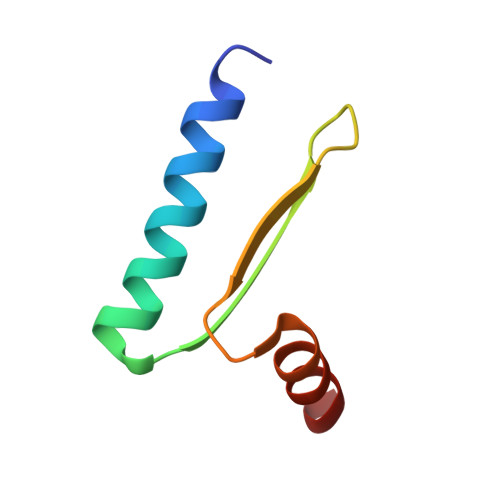The intervening domain is required for DNA-binding and functional identity of plant MADS transcription factors.
Lai, X., Vega-Leon, R., Hugouvieux, V., Blanc-Mathieu, R., van der Wal, F., Lucas, J., Silva, C.S., Jourdain, A., Muino, J.M., Nanao, M.H., Immink, R., Kaufmann, K., Parcy, F., Smaczniak, C., Zubieta, C.(2021) Nat Commun 12: 4760-4760
- PubMed: 34362909
- DOI: https://doi.org/10.1038/s41467-021-24978-w
- Primary Citation of Related Structures:
7NB0 - PubMed Abstract:
The MADS transcription factors (TF) are an ancient eukaryotic protein family. In plants, the family is divided into two main lineages. Here, we demonstrate that DNA binding in both lineages absolutely requires a short amino acid sequence C-terminal to the MADS domain (M domain) called the Intervening domain (I domain) that was previously defined only in type II lineage MADS. Structural elucidation of the MI domains from the floral regulator, SEPALLATA3 (SEP3), shows a conserved fold with the I domain acting to stabilise the M domain. Using the floral organ identity MADS TFs, SEP3, APETALA1 (AP1) and AGAMOUS (AG), domain swapping demonstrate that the I domain alters genome-wide DNA-binding specificity and dimerisation specificity. Introducing AG carrying the I domain of AP1 in the Arabidopsis ap1 mutant resulted in strong complementation and restoration of first and second whorl organs. Taken together, these data demonstrate that the I domain acts as an integral part of the DNA-binding domain and significantly contributes to the functional identity of the MADS TF.
Organizational Affiliation:
Laboratoire Physiologie Cellulaire et Végétale, Université Grenoble Alpes, CNRS, CEA, INRAE, IRIG-DBSCI-LPCV, Grenoble, France.














